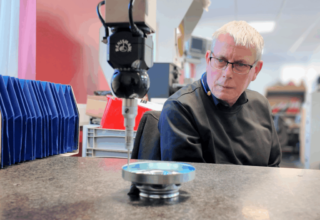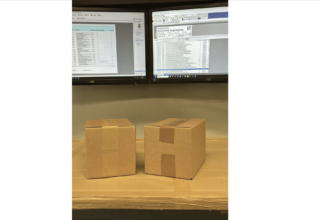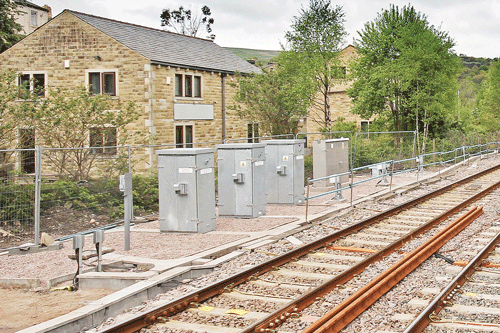
The rail industry is working hard on new targets to drive greater efficiency, reduce operating costs and improve service reliability. Network Rail has committed to achieving “20 per cent efficiencies over the period to 2019, while continuing to deliver a safe and reliable network and investing £38 billion in a bigger, better railway.”
Many of these impacts will derive from major projects such as Crossrail, Thameslink, Birmingham’s New Street development, signalling upgrades and electrification of the Great Western main line. They will also come from ‘route criticality’, the classification system helping to prioritise and target improvements where track assets are incurring most delays.
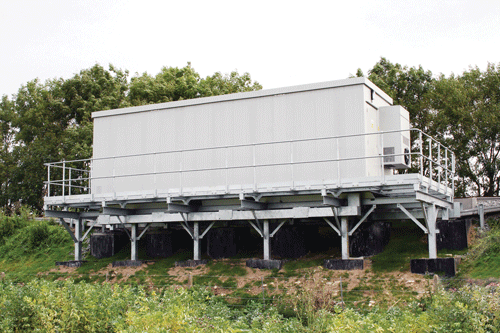
Protecting Assets
But the industry should not under-estimate what the engineering of physical protection for line-side services – location cabinets and REBs (Relocatable Equipment Buildings) for signalling, telecommunications and power – can contribute to these outcomes.
In protecting the electrical, telecommunications and signalling systems that power and control the network, their performance is clearly crucial to service reliability as well as the safety of passengers and rail employees. And, with manufacturers capable of designing equipment to overcome difficult logistics and minimise track possession, they can also deliver the efficiencies sought by project and maintenance teams.
With many installed in remote, unmanned areas, cabinets and REBs are vulnerable to tampering, damage or even complete removal from a range of threats – trespass, vandalism, theft, criminal attack as well as risks of sabotage, infiltration and even terrorist attack.
The financial costs and disruption to service are only too apparent from the industry’s experience of metal theft. Cabinets are major targets, of course, for the copper content of cabling installed inside.
In 2010/11, as copper prices peaked, theft of railway cabling is estimated to have caused disruption to over 35,000 rail services and £16.5 million in replacement costs.
Work by Network Rail and the British Transport Police (BTP) has since seen a significant drop in cable theft offences, aided by amendments to the Scrap Metal Dealers Act in 2013 which introduced licensing and tighter controls in the scrap metal trade. Increased CCTV has also helped, as well as the introduction of forensic marking of cables and cable coding for traceability, making it harder to sell on to legitimate merchants.
But, with metal theft still one of the fastest growing crime types globally, measures that target the disposal of stolen metal do not prevent the devastation of assets on the network.
A study published last year by experts at UCL indicates that, in the case of live-metal theft (such as signalling cable and telecommunications wire), less than one per cent of offences happen within the confines of a station. Inevitably, criminals will continue to target the thousands of cabinets and REBs that lie beyond the catchment of station security, CCTV and surveillance.
The ultimate deterrent lies in measures that increase the effort needed to gain access to the cable – or to breach the housing for any other reason.
Robust Approval
In addition to PADS approval, it is therefore critical that lineside housings are assured by robust third party approval that proves their ability to resist physical attack by criminals and their tools of choice.
This is the rationale behind LPCB (Loss Prevention Certification Board), one of the most rigorous certification regimes for warranting the performance of security equipment.
Cabinets and modular buildings/REBs which have been approved by LPCB meet the stringent test standard LPS 1175. This subjects products to different severities of attack using different tools and for different durations, awarding a security rating according to performance – the highest being for terrorist level risks. LPCB approval is revised according to advice from stakeholders on criteria for testing and physical resistance.
Significantly, LPCB approval is not based on a one-off type test. It involves regular audits to ensure on-going production units comply with the prevailing test standard and any revisions. Approved products must also be made to a quality management system providing documented assurance of the consistency of materials and fabrication vital to the reproducibility of structural performance. While a type test indicates the test sample meets a particular performance standard, it does not guarantee that products coming off the production line provide equivalent performance.
LPCB approval demands considerable technical capability and significant investment from manufacturers. Over 95% of products that claim secure design fail the LPCB test. It can be assumed from this that a large percentage of products on the market offering security features will fall below LPCB’s stringent standards.
Technocover, an accredited Link-Up supplier, invests significant money and resources in LPCB approval. It has a dedicated department working full-time to maintain certification on existing products and gain approvals for new launches.
As a result, under the respected UltraSecure brand, the company offers one of the largest ranges of LPCB-approved security equipment, also including doors, access covers, mesh enclosures and louvres for reinforcing security in stations and other areas of rail.
By 2019, the rail network will be supporting 225 million more passenger journeys each year with more trains running, while 500 more level crossings will be closed as centralised signalling continues. Growth of this kind, with ever-greater reliance on trackside technology, needs to be underpinned by proven levels of protection from the cabinets and REBs that are the last line of defence for the nerve system of the network.
However, cost-effective procurement of these vital structures relies on more than robust third-party approval.
Physical security specialists are working hard on innovations to enhance asset reliability and on flexible approaches to installation to reduce track possession – thinking outside the box, quite literally.
Keeping Things Cool
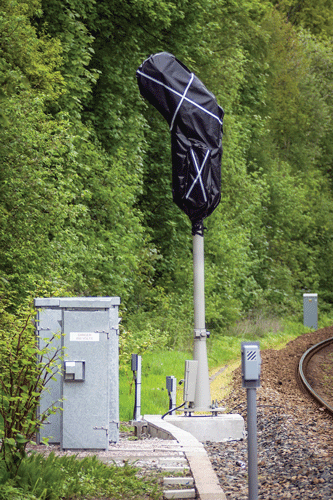
To tackle the need for internal regulation of heat in some applications, Technocover has introduced two types of location case cooling kit in line with a current Network Rail framework agreement. These provide a retro-fit solution for maintaining a stable internal temperature inside the cabinet, and reducing the risk of solar heat gain.
The modular format, designed for full and half-size location cases, means that it can be used to protect just the sides of the unit at risk. The cooling kits are available on UltraSecure LPCB cabinets for SR3 and SR4 security ratings (LPS 1175 Issue 5).
Experienced suppliers have evolved comprehensive support services to deliver innovation and to tailor physical protection to the specific needs of rail.
Technocover offers design and technical support to rail engineers and contractors to help in the planning and timely delivery of upgrade work, for minimal disruption and maximising whole life value.
Early involvement is key in identifying opportunities for cost-efficiency, and achieving security installations that are reliable and offer extended service life with minimal maintenance.
The undertaking of large REBs, especially on steep embankments and in rural locations, poses logistical and design challenges. These need careful planning to look at different design and installation scenarios, identifying ways to value engineering and strip out approaches that involve unnecessary cost.
System protection of steel housings, the predominant choice in rail, should not be overlooked. The effects of climate change are posing new threats to the network, especially in coastal areas. Equipment should have a suitably robust galvanised finish to combat local weathering factors to support the expected security performance over long service life. Technocover provides augmented specifications of post-galvanising for installations exposed to higher regional values of atmospheric corrosion.
By the end of CP5, Network Rail aims to deliver its best-ever level of punctuality for passengers and freight – with a target of 92.5 per cent of trains arriving on time. In making this happen, it will need to increase the reliability of assets and reduce failures related to track, points and signalling.
A robust standard of protection for lineside services is fundamental to this reliability. This can be best achieved by partnering with fully resourced and innovative suppliers of LPCB equipment, like Technocover.










